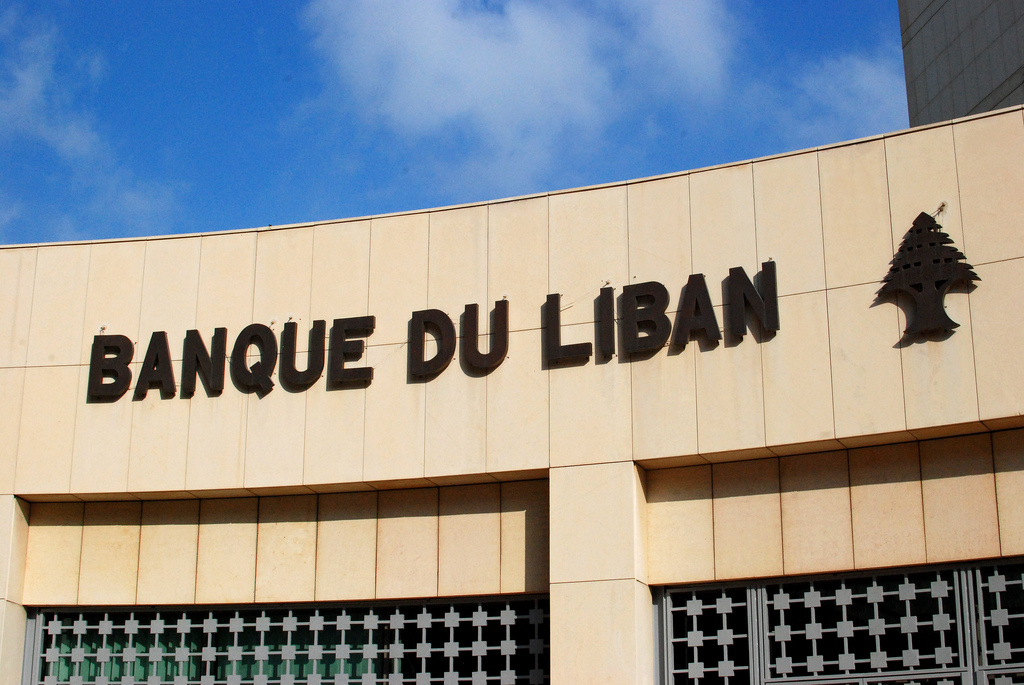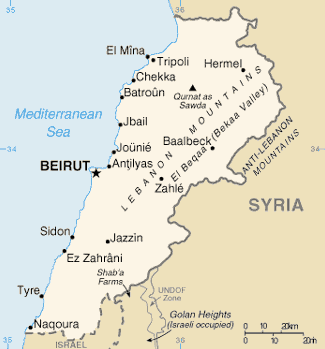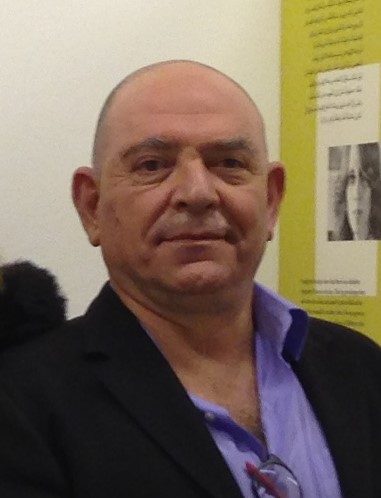|
2021 Lebanese Blackout
The 2021 Lebanese blackout was a power outage in Lebanon that started on 9 October 2021, after two of the country’s power plants shut down when they ran out of diesel fuel. The two power stations provided 40% of Lebanon's electricity. Due to this, the power grid was shut down nationwide. The outage ended on 10 October, 24 hours after the start. Background Because of the ongoing Lebanese liquidity crisis, the Lebanese pound lost over 90% of its value, leaving the government unable to pay for fuel imports, resulting in a general shortage of fuel in Lebanon, including for its power plants. The fuel shortage also meant that people and businesses could not run their private fuel-powered electricity generators. Outage The power outage started on 9 October, after the Zahrani power station ran out of fuel. The day before, the Deir Ammar station had also stopped running for the same reason. With both plants shut down, national power production was limited to 270 megawatts, making the ... [...More Info...] [...Related Items...] OR: [Wikipedia] [Google] [Baidu] |
Power Outage
A power outage (also called a powercut, a power out, a power failure, a power blackout, a power loss, or a blackout) is the loss of the electrical power network supply to an end user. There are many causes of power failures in an electricity network. Examples of these causes include faults at power stations, damage to electric transmission lines, substations or other parts of the distribution system, a short circuit, cascading failure, fuse or circuit breaker operation. Power failures are particularly critical at sites where the environment and public safety are at risk. Institutions such as hospitals, sewage treatment plants, and mines will usually have backup power sources such as standby generators, which will automatically start up when electrical power is lost. Other critical systems, such as telecommunication, are also required to have emergency power. The battery room of a telephone exchange usually has arrays of lead–acid batteries for backup and also a socket ... [...More Info...] [...Related Items...] OR: [Wikipedia] [Google] [Baidu] |
Lebanese Liquidity Crisis
The Lebanese liquidity crisis is an ongoing financial crisis affecting Lebanon, that became fully apparent in August 2019, and was further exacerbated by both the COVID-19 pandemic in Lebanon (which began in 2020) and the 2020 Beirut port explosion. The roots of the crisis run deep and the country experienced liquidity shortages in the years prior to 2019 but the full extent of the fragility of the economy were concealed by the financial engineering of the governor of the central bank. Lebanon's crisis was worsened by U.S. sanctions targeting Syria's government and Iran-backed Hezbollah. Background Since 1997, the Lebanese pound has been pegged to the U.S. dollar at a rate of £L1,507.5 per US$1. The stability of the pound has been the cornerstone of the Lebanese central bank policy for over two decades. It was meant to bring about much-needed stability to the country after a severe devaluation of the Lebanese pound following the end of the Lebanese Civil War. Lebanon's post-wa ... [...More Info...] [...Related Items...] OR: [Wikipedia] [Google] [Baidu] |
Lebanese Pound
The pound or lira ( ar, ليرة لبنانية ''līra Libnāniyya''; French: ''livre libanaise''; abbreviation: LL in Latin, in Arabic, historically also £L, ISO code: LBP) is the currency of Lebanon. It was formerly divided into 100 piastres (or ''qirsh'' in Arabic) but because of high inflation during the Lebanese Civil War (1975–1990) the use of subunits was discontinued. The plural form of lira, as used in relation to the currency, is either ''lirat'' (ليرات ''līrāt'') or invariant, whilst there were four forms for ''qirsh'': the dual ''qirshān'' (قرشان) used with number 2, the plural ''qurush'' (قروش) used with numbers 3–10, the accusative singular ''qirshan'' (قرشا) used with 11–99, and the genitive singular ''qirshi'' (قرش) used with multiples of 100. The number determines which plural form is used. Before World War II, the Arabic spelling of the subdivision was غرش (''girsh''). All of Lebanon's coins and banknotes are bilingual in A ... [...More Info...] [...Related Items...] OR: [Wikipedia] [Google] [Baidu] |
Banque Du Liban
Banque du Liban (BdL, ar, مصرف لبنان, English: Bank of Lebanon) is the central bank of Lebanon. It was established on August 1, 1963, and became fully operational on April 1, 1964. It is currently headed by Riad Salameh. One of the main responsibilities of the bank is issuing Lebanon's currency, the Lebanese Pound. Other responsibilities include maintaining monetary stability, regulation of money transfers, and maintaining the soundness of the banking sector. Banking is a very important part of Lebanon's economy with over 100 different banks, which makes the role of BdL particularly important. It currently owns 99.37% of the shares of Lebanon's national carrier, Middle East Airlines. The BdL is also the dominant shareholder of the Intra Investment Company (IIC) which in turn owns 53% of Casino du Liban, making it the only central bank worldwide to rule over a Las Vegas-style gambling casino. Besides the main branch in Beirut, it has branches in Aley, Baalbeck, Bikfaya ... [...More Info...] [...Related Items...] OR: [Wikipedia] [Google] [Baidu] |
Ministry Of Energy And Water (Lebanon)
The Ministry of Energy and Water is the government ministry responsible for energy, water, resources, mines and quarries in Lebanon. Ministers * Maurice Sehnaui - 2004 - 2005 * Gebran Bassil - 2009 - 2014 * Nada Boustani Khouri - from 4 February 2019. * Raymond Ghajar - from 21 January 2020 to 10 September 2021, in the cabinet of Hassan Diab. On 10 August 2020, the entire cabinet resigned but continued to serve in a caretaker capacity until the new government was formed. * Walid Fayad - from 10 September 2021 to present, in Third Cabinet of Najib Mikati On 10 September 2021, a new Council of Ministers of Lebanon, government headed by Najib Mikati was formed in Lebanon, 13 months after the resignation of former Prime Minister Hassan Diab in August 2020. The cabinet is composed of 24 ministers. Co .... References External links Official website Energy and Water Lebanon, Energy and Water {{Lebanon-gov-stub ... [...More Info...] [...Related Items...] OR: [Wikipedia] [Google] [Baidu] |
Lebanese Armed Forces
) , founded = 1 August 1945 , current_form = 1991 , disbanded = , branches = Lebanese Ground ForcesLebanese Air Force Lebanese Navy , headquarters = Yarze, Lebanon , flying_hours = , website = , commander-in-chief = Vacant , commander-in-chief_title = Commander-in-chief , chief minister = Najib Mikati , chief minister_title = Prime Minister , minister = Maurice Sleem , minister_title = Minister of Defense , commander = Joseph Aoun , commander_title = Commander of the Armed Forces , age = 18–30 years of age for voluntary military service , conscription = No (abolished in 2007) , manpower_data = , manpower_age = 18–39 , available = 1,106,879 , available_f = 1,895,723 , fit = 934,828 , fit_f = 948,327 , reaching = , reaching_f = , active = 75,000 , ra ... [...More Info...] [...Related Items...] OR: [Wikipedia] [Google] [Baidu] |
Halba, Lebanon
Halba ( ar, حلبا) is the capital of Akkar Governorate in northern Lebanon, close to the border with Syria. It is located at around . Its population is divided between Sunni Muslims, Greek Orthodox Christians, Maronites, and followers of other religions. History In 1838, Eli Smith noted the village, whose inhabitants were Greek Orthodox, located west of esh-Sheikh Mohammed. In 1856 it was named ''Halba'' on Kiepert's map of Palestine/Lebanon published that year,Kiepert, 1856Map of Northern Palestine/Lebanon/ref> Halba is home tSada AkkarNewspaper, the only privately owned news agency in Akkar District. Halba is also home to a Lebanese Red Cross The International Red Cross and Red Crescent Movement is a humanitarian movement with approximately 97 million volunteers, members and staff worldwide. It was founded to protect human life and health, to ensure respect for all human beings, and ... First Aid Center. References Bibliography * External links Halba Localib ... [...More Info...] [...Related Items...] OR: [Wikipedia] [Google] [Baidu] |
Électricité Du Liban
Électricité du Liban (Electricity of Lebanon; EDL) is a public industrial and commercial establishment in Lebanon which controls 90% of the country's electricity production, transmission and distribution activities. History Ottoman Gas Company of Beirut (1908) In 1908, the Société Ottomane du Gaz de Beyrouth distributed electricity in the city of Beirut, replaced by the Société d'Électricité de Beyrouth in 1923, a company incorporated under French law. Before 1939, the company operated a 4,500 kW diesel power plant and a 6,400 kW hydraulic plant. In March 1954, the Lebanese State bought the Beirut Electricity Company, which became the Electricity Office. The Zouk power station went into production in 1956. At the end of the Second World War, Lebanon produced 80 MW in 1948, 280 MW in 1957, and 692 MW in 1964. Electricity was produced by private and disparate production units. The Qaraoun dam was commissioned in 1961. Office of Electricity of Lebanon (1964) The Office ... [...More Info...] [...Related Items...] OR: [Wikipedia] [Google] [Baidu] |
Tripoli, Lebanon
Tripoli ( ar, طرابلس/ALA-LC: ''Ṭarābulus'', Lebanese Arabic: ''Ṭrablus'') is the largest city in northern Lebanon and the second-largest city in the country. Situated north of the capital Beirut, it is the capital of the North Governorate and the Tripoli District. Tripoli overlooks the eastern Mediterranean Sea, and it is the northernmost seaport in Lebanon. It holds a string of four small islands offshore. The Palm Islands were declared a protected area because of their status of haven for endangered loggerhead turtles (''Chelona mydas''), rare monk seals and migratory birds. Tripoli borders the city of El Mina, the port of the Tripoli District, which it is geographically conjoined with to form the greater Tripoli conurbation. The history of Tripoli dates back at least to the 14th century BCE. The city is well known for containing the Mansouri Great Mosque and the largest Crusader fortress in Lebanon, the Citadel of Raymond de Saint-Gilles. It has the second hig ... [...More Info...] [...Related Items...] OR: [Wikipedia] [Google] [Baidu] |
Energy In Lebanon
Energy in Lebanon is dominated by oil, which represents more than 95% of the primary energy consumed in 2017. The great majority of energy used in the country is imported. The energy market in Lebanon is characterized by sharply rising consumption, and frequent shortages due to dilapidated infrastructure partly destroyed by the civil war that ravaged the country between 1975 and 1990. Since the 1990s, however, major work has been undertaken by the public authorities to increase production, diversify the energy mix which is highly dependent on imported fossil fuels, and connect many households without access to electricity. The consumption of primary energy has thus increased by more than 4 between 1990 and 2017, going from around 2 to more than 8 tonnes of oil equivalent over this period. But large gaps between generation capacity and electricity demand persist. The primary energy use in 2009 in Lebanon was 77 TWh, 18 TWh per million persons. Overview History Electricity i ... [...More Info...] [...Related Items...] OR: [Wikipedia] [Google] [Baidu] |
Energy Crisis
An energy crisis or energy shortage is any significant bottleneck in the supply of energy resources to an economy. In literature, it often refers to one of the energy sources used at a certain time and place, in particular, those that supply national electricity grids or those used as fuel in industrial development and population growth have led to a surge in the global demand for energy in recent years. In the 2000s, this new demand – together with Middle East tension, the falling value of the US dollar, dwindling oil reserves, concerns over peak oil, and oil price speculation – triggered the 2000s energy crisis, which saw the price of oil reach an all-time high of in 2008. Causes Most energy crises have been caused by localized shortages, wars and market manipulation. Some have argued that government actions like tax hikes, nationalisation of energy companies, and regulation of the energy sector, shift supply and demand of energy away from its economic equilibrium. ... [...More Info...] [...Related Items...] OR: [Wikipedia] [Google] [Baidu] |
2021 In Lebanon
Events in the year 2021 in Lebanon. Incumbents * President: Michel Aoun * Prime Minister: ** Hassan Diab ** Najib Mikati Events Ongoing – COVID-19 pandemic in Lebanon January * January 25 – Protests and clashes in Tripoli erupt against nationwide COVID-19 lockdown measures. February * February 16 – An oil spill in the Mediterranean caused hundreds of tons of tar to wash up on beaches including environmentally sensitive areas such as the Tyre Coast Nature Reserve, an important nesting site for endangered sea turtles. March * March 26 – The first 50,000 Sputnik V COVID-19 vaccine doses arrived in Lebanon, adding to the 224,640 Pfizer-BioNTech doses received over the previous six weeks. May * May 13 – Three rockets launched from the Qlaileh region towards Israel, landing in the Mediterranean Sea. This comes amidst the 2021 Israel-Palestine crisis. * May 14 – One person killed by Israeli fire during demonstrations along the Blue Line. * May 17 – Six roc ... [...More Info...] [...Related Items...] OR: [Wikipedia] [Google] [Baidu] |








